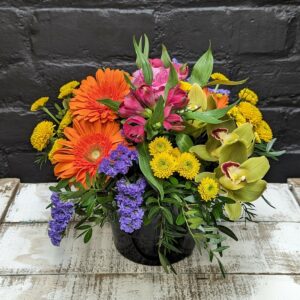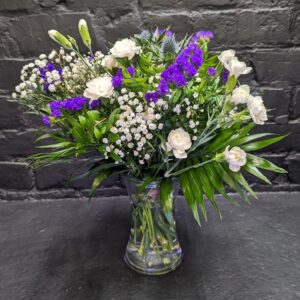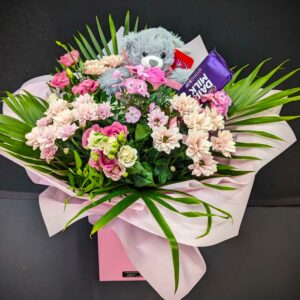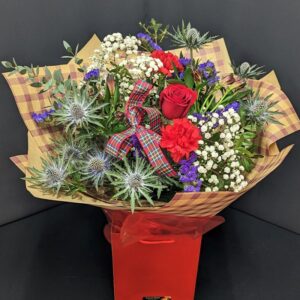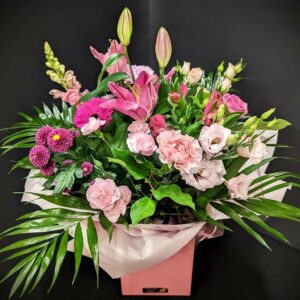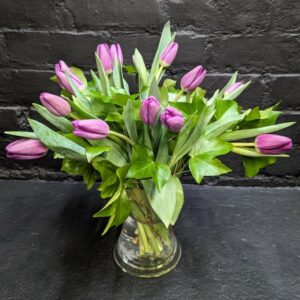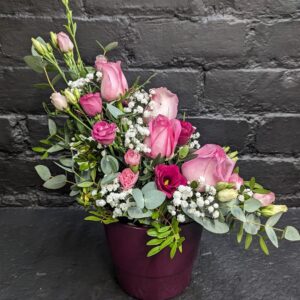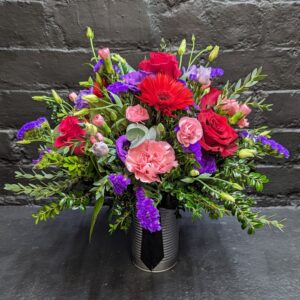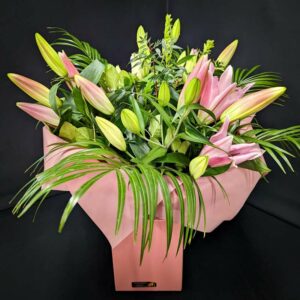When you’re new to flower arranging, creating a flower bouquet or boutonnière can seem a bit intimidating. But by grasping some design fundamentals, such as working with shapes and experimenting with various colors and textures, your arrangements will quickly take on a more refined look. Here’s Anastasia Florists‘ beginner’s guide to crafting flower arrangements.
A Step-by-Step Guide to Making a Beautiful Flower Arrangement
There are four typical steps in the design process:
Conceptualizing the Design
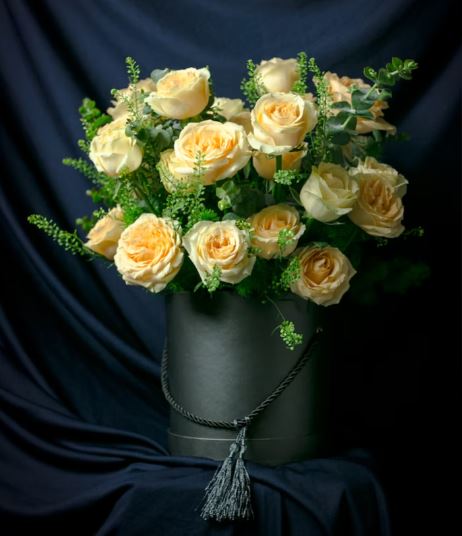
As you go through this process, keep the final floral design in mind. Determine the general components and characteristics of the arrangement, such as its overall style and shape. Ask yourself if you want something light and airy or full and lush. If it’s a smaller compote arrangement for a table, what size do you need? By narrowing down these details, you’ll be able to better guide yourself through the rest of the design process.
Choosing Ingredients For a Flower Arrangement
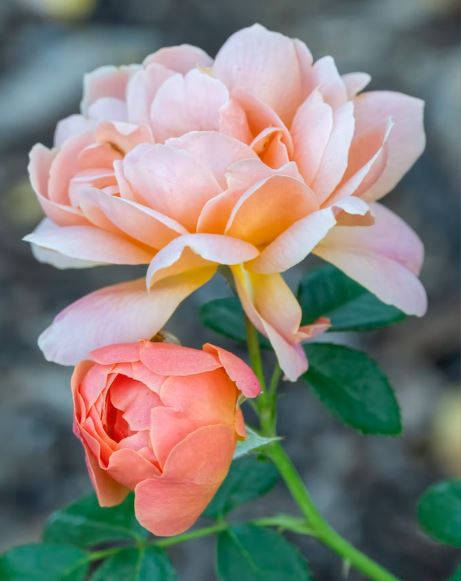
After you establish what kind of design you want, then you can pick which flowers and greenery to use. Usually, different types are used for specific purposes. It’s possible that your final product will include all of these elements, or it may only have two or three components.
- Focal flowers are the key element of the design and act as a visual break for the eye. Focal flowers are often larger blooms that carry more visual weight, such as garden roses, peonies, dahlias, etc. By using focal flowers in your floral designs, you can create a sense of stability and interest.
- Line flowers are taller flowers with blooms that form along the stems. Line flowers can be used to create an overall shape, establish the dimensions of a piece, and carry color to the edges of the arrangement. Line flowers can be found in a variety of colors, making them a versatile tool for any floral arrangement.
- Filler flowers are smaller blooms that support the focal flowers and add texture, depth, and color to the arrangement. These can be anything from small flowers like spray roses and carnations to berries like hypericum or privet. Filler flowers are an important part of any floral design, as they help create a balanced, beautiful arrangement.
- Detail flowers are often lighter and more delicate, adding airiness and movement to an arrangement. They are usually added toward the end because of their fragile stems. Detail flowers float above the arrangement and add texture and elegance to a piece. Common detail flowers include sweet peas, butterfly ranunculus, and cosmos.
- Greenery is an important part of any floral arrangement. It helps to create the overall shape and sets up a base for the rest of the design. Greenery comes in many different shades, textures, and shapes, so it is important to choose the right type of greenery for your design direction. For a romantic, garden-style design, choose larger focal flowers, filler flowers, and greenery that will create a more lush, full look. Greenery can be used to fill in empty spaces, add texture, or even serve as the main focus of the arrangement. No matter what style you are going for, make sure to choose the right type of greenery to complement your design.
Determine the Color of Palette
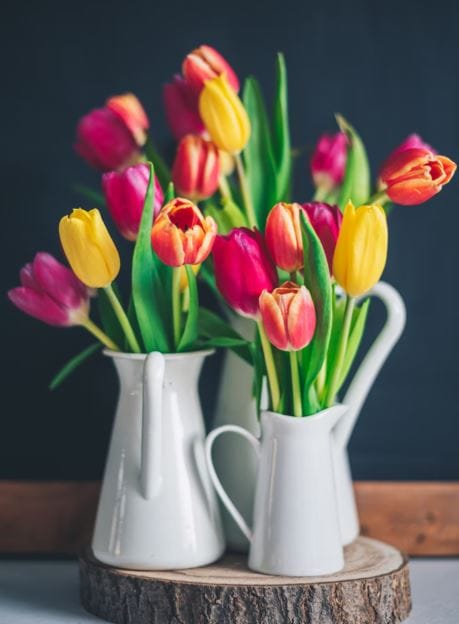
Creating a color palette is an important part of the ingredient stage. You want to choose colors that work well together and feel balanced. There are different ways to create color balance:
- Monochromatic colors can be used to create a unified and sophisticated aesthetic. Working with shades of the same hue gives you the opportunity to experiment with different shapes, textures, and tones within one color family. Monochromatic arrangements are timelessly chic and perfect for any event or occasion.
- Analogous colors are another great option for creating an artfully balanced arrangement. Analogous color schemes consist of three adjacent hues on the color wheel that blend harmoniously together. For instance, using a combination of pink and red flowers in the same bouquet would be considered analogous since they are both warm-toned shades. Analogous arrangements can come to life with the addition of a flower that acts as a bridge, such as yellow or orange. This will allow you to create a more unified bouquet and bring out the true beauty of your color choices. Analogous colors are an excellent way to add depth and dimension to any floral arrangement. With careful selection, you can create something truly special!
- Complementary and near-complementary colors are great for creating balance in any design. Complementary colors are those that are opposite each other on the color wheel, such as blue and orange or red and green, while near-complementary colors are two shades that almost touch each other on the wheel, like yellow and purple. Using these colors together can add a touch of contrast to a design and create visual interest. For example, vibrant blues and oranges can be softened with near-complementary yellow or green hues. Similarly, soft pinks and peaches can be accented with a bit of pale blue or lilac, while purples and reds can be balanced out with the addition of pale lime green foliage. Complementary and near-complementary colors can truly enhance any design, adding a sense of balance while keeping it visually interesting.
- Color saturation is a key factor in creating a visually appealing design. Color saturation refers to the intensity or brightness of colors, ranging from low saturation (muted or muddy colors) to high saturation (vibrant and bright colors). When working with color in design, it’s important to maintain an overall level of color saturation throughout the project.
Placing the Greenery and Florals in the Design
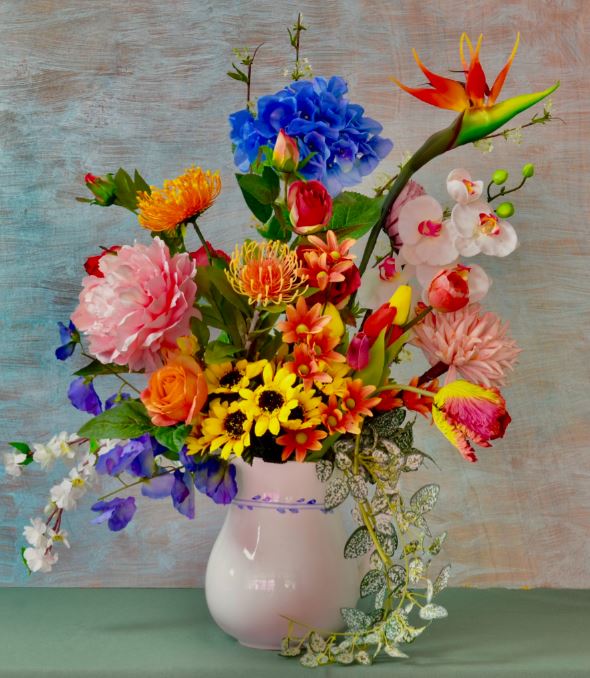
After you’ve selected your blooms and greenery, it’s time to start putting together your arrangement!
Follow the general rule of starting with your base and then adding complementary flowers to fill out the design.
- Greenery: Is the perfect starting point when creating a floral arrangement. With greenery, you can achieve an overall shape and set the dimensions for your design. Greenery is also useful for hiding the mechanics of your design – such as floral tape and other supplies – so that they are not visible to viewers. When selecting greenery, be sure to choose a variety of shapes and textures to add interest and depth to your design. Greenery can also be used to create balance, texture, and volume within the arrangement. With a bit of creativity, greenery can truly bring your floral arrangement to life!
- Line flowers: Add an extra layer of beauty and texture to arrangements, drawing the eye along the lines of greenery. Line flowers can also be used to emphasize a particular shape you have created in your arrangement. Line flowers come in many colors, so you can choose ones that match or compliment the other elements of your design. When using line flowers, it’s important to layer them in after the greenery, and to place them so that they carry the color of your choice to the edges of the arrangement. Line flowers can be used to great effect when combined with other elements, including other types of flowers, candles and foliage. Line flowers allow you to create a unique look for any occasion or season. With careful placement, line flowers can add interest and draw attention to any arrangement. Line flowers are a versatile addition to your floral designs and will help you create beautiful arrangements for any occasion.
- Big to Small: After you have selected your main flowers, create a balanced design by filling in the blank spaces with smaller and more delicate flowers. Start with the larger focal blooms first, then add filler flowers in various sizes to give dimension to the piece. Lastly, incorporate detailed flowers and floaters for texture and movement. This layering of big-to-small flowers will give your bouquet a natural and effortless look. Take time to assess the piece and make necessary adjustments with more greenery or filler flowers if needed. With this approach, you are sure to end up with a beautiful and unique arrangement!
Final Thought
Anastasia Florists encourages everyone to learn the basics of floral design. It is a great way to get creative with flowers and express your style! Our Florists Team offers tips for beginners, including working with limited materials. With only three or four ingredients, you can make a beautiful arrangement that reflects your unique style. Anastasia Florists also offers tutorials, classes and workshops to help you hone your design skills. We believes that everyone can learn the basics of floral design, no matter how little experience they have. So don’t be afraid to experiment and start creating with Anastasia Florists today!

